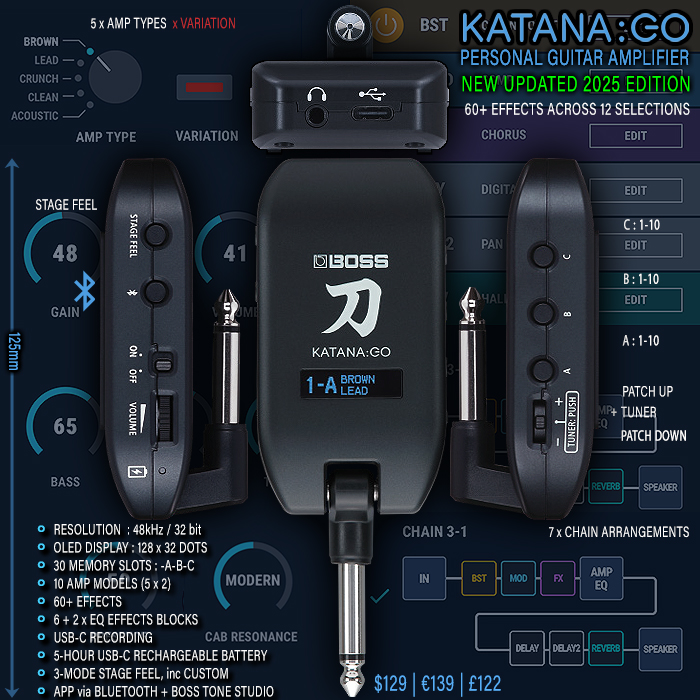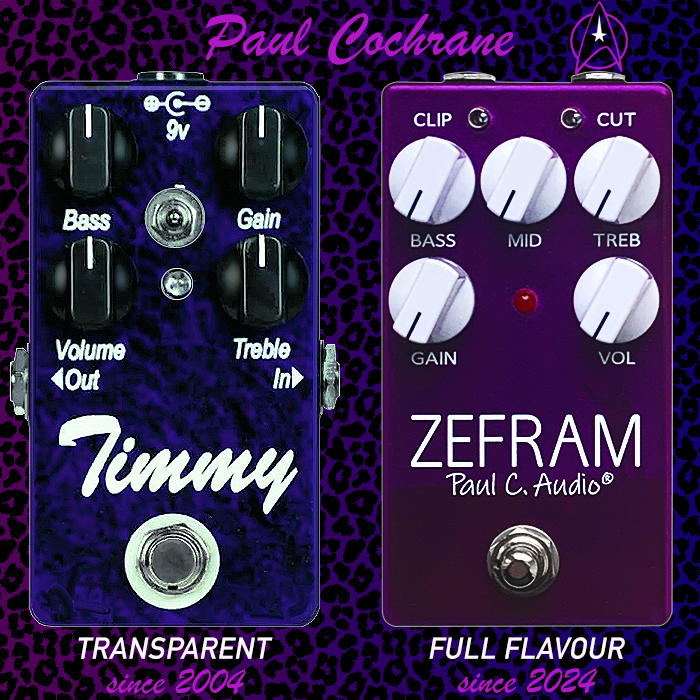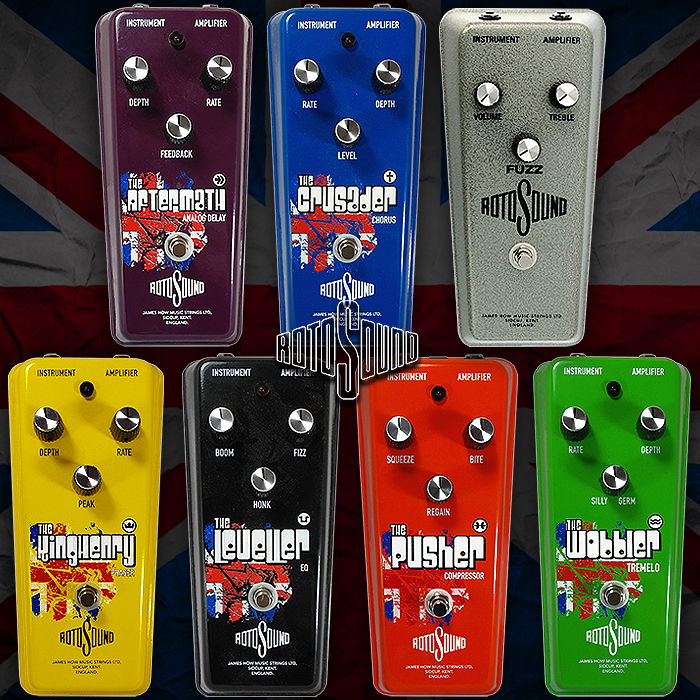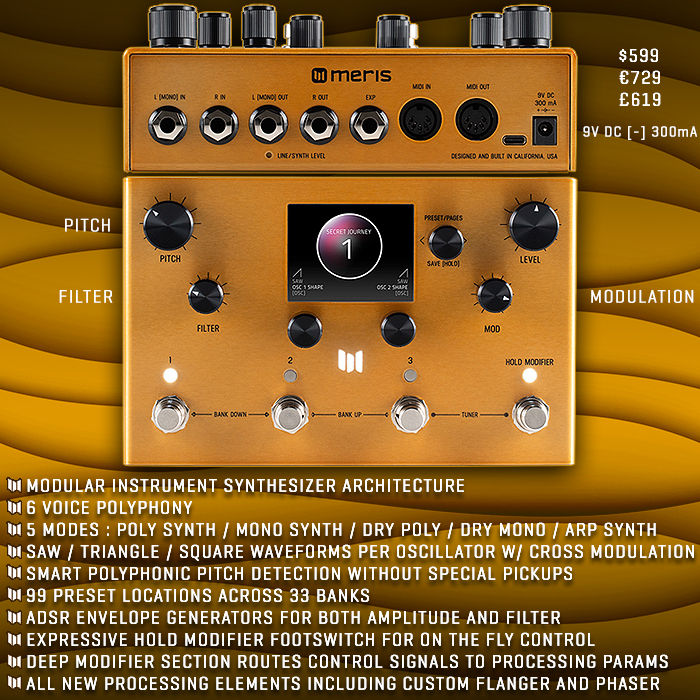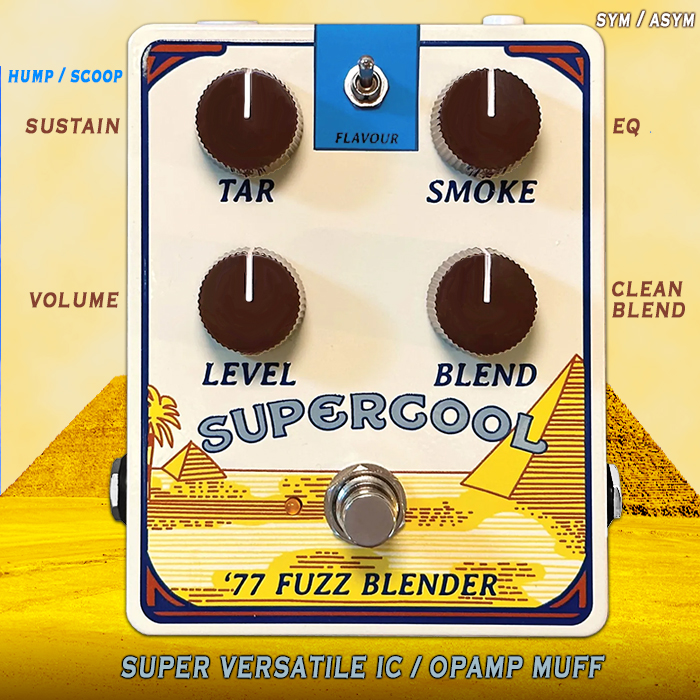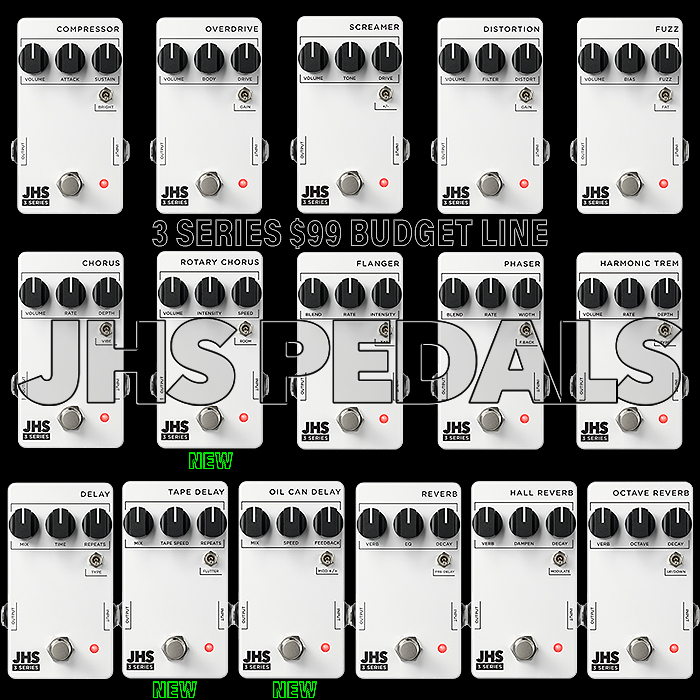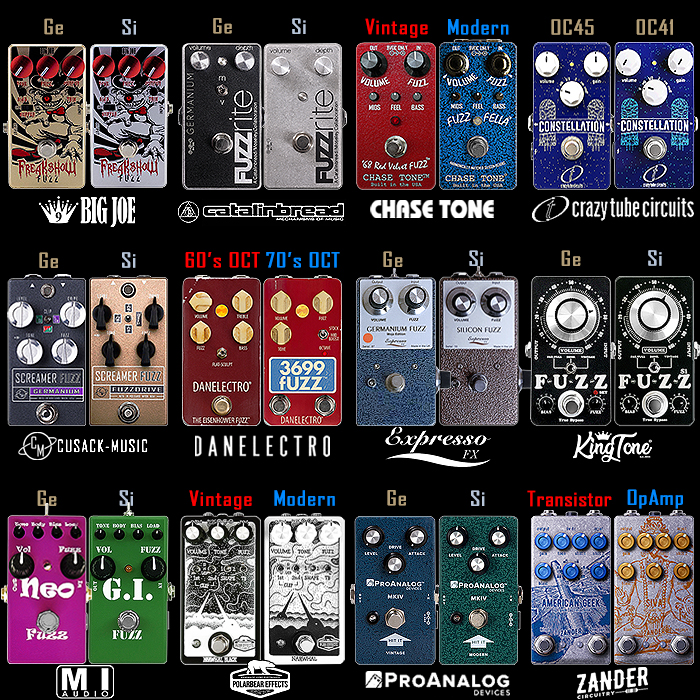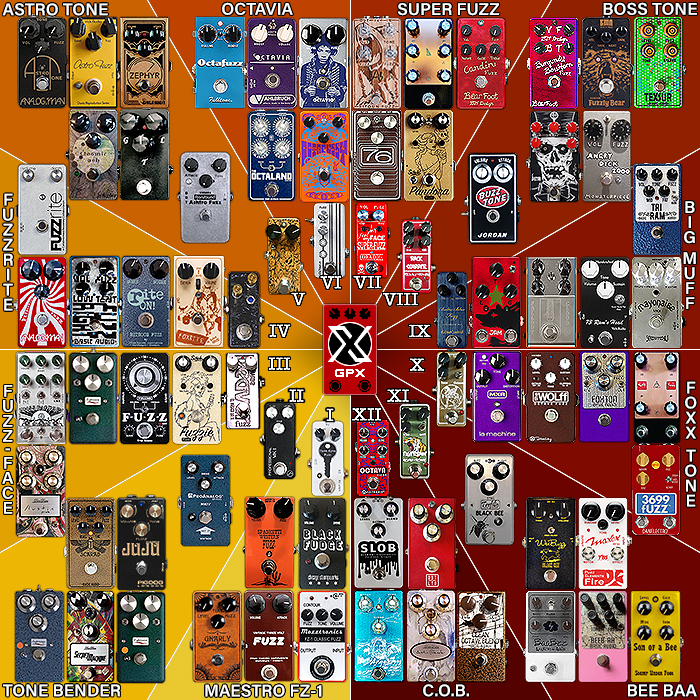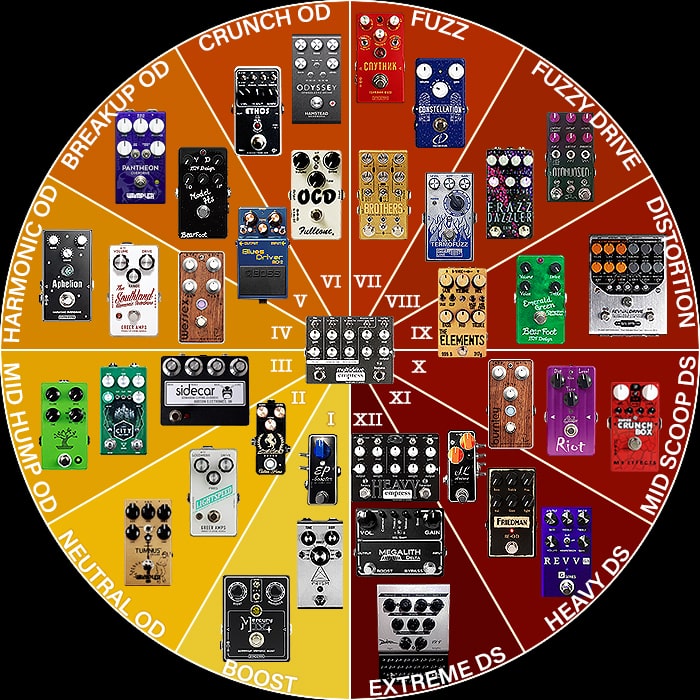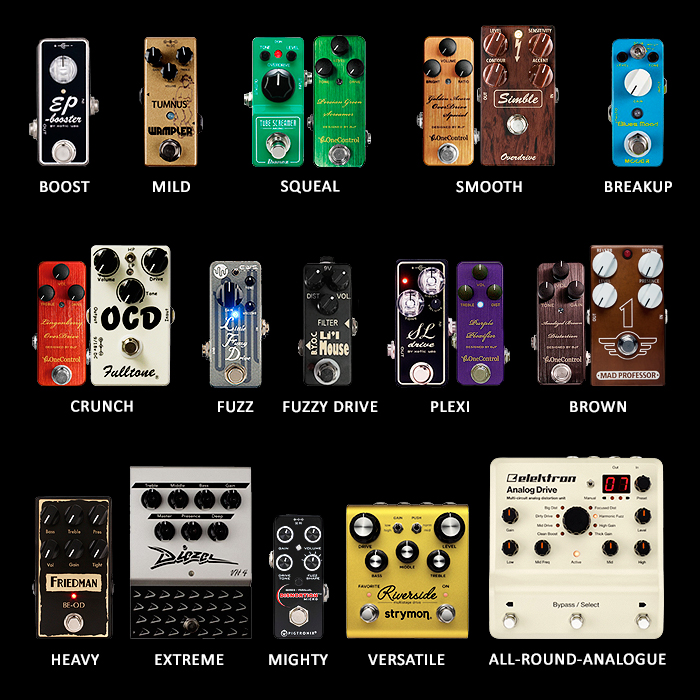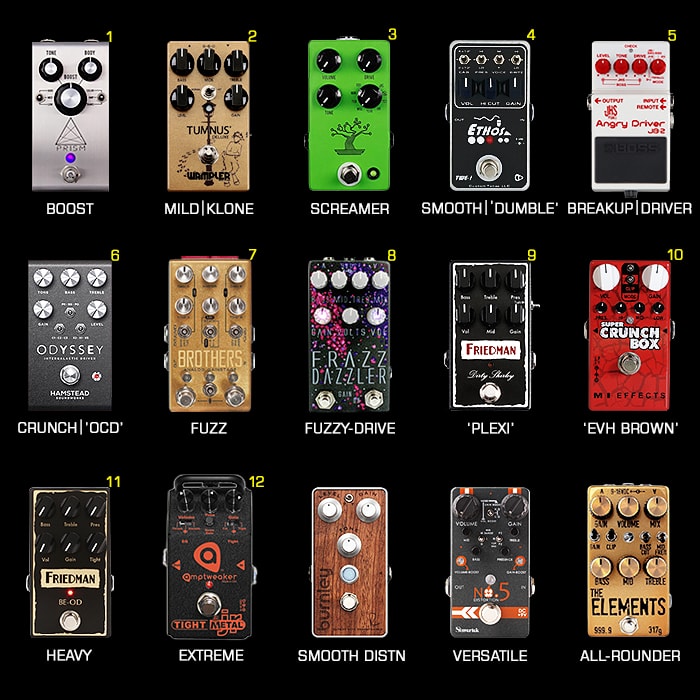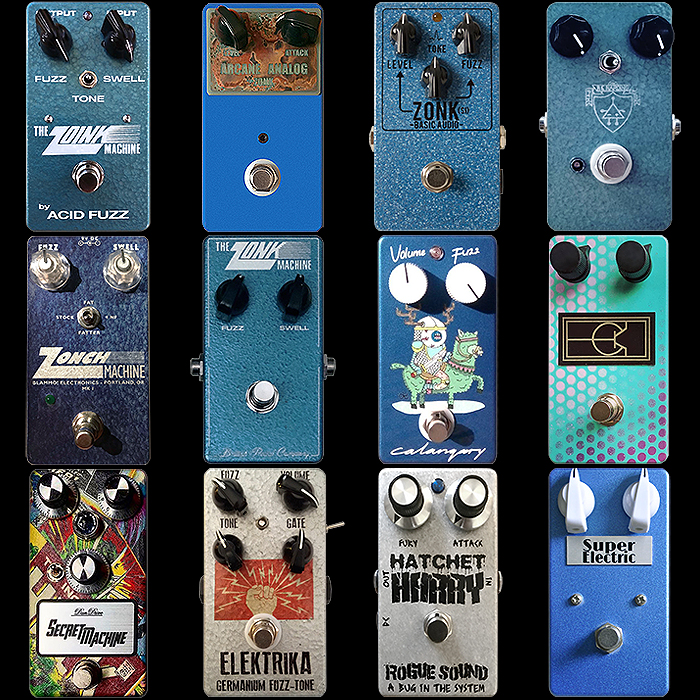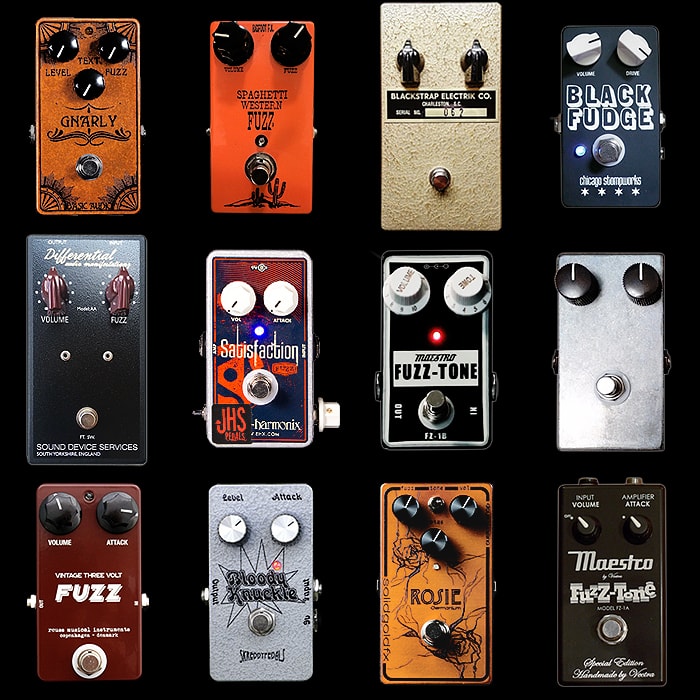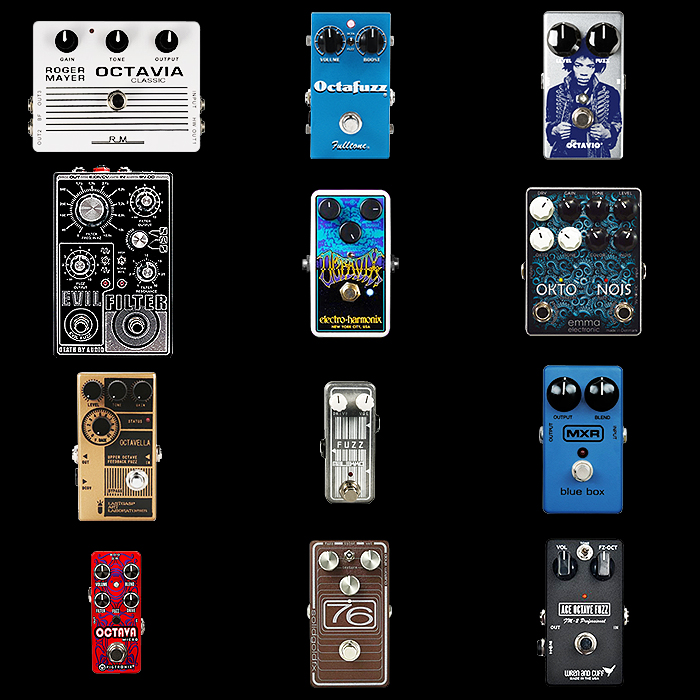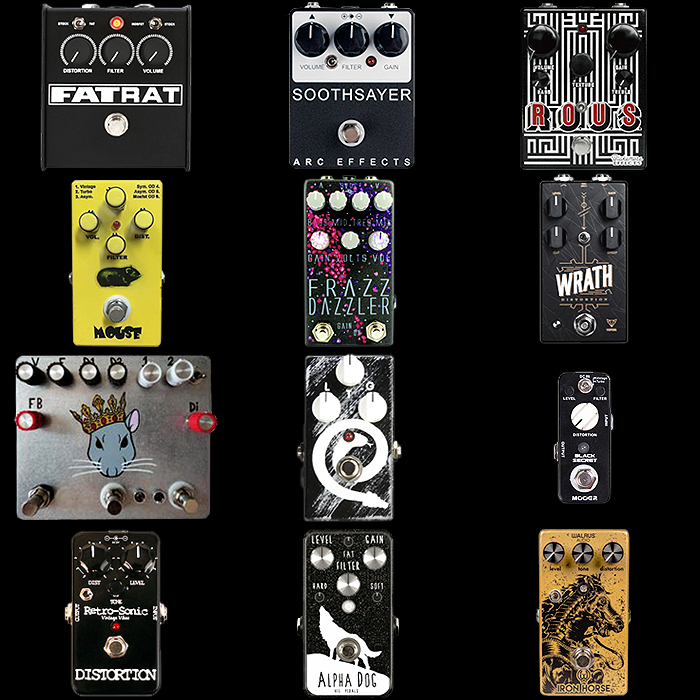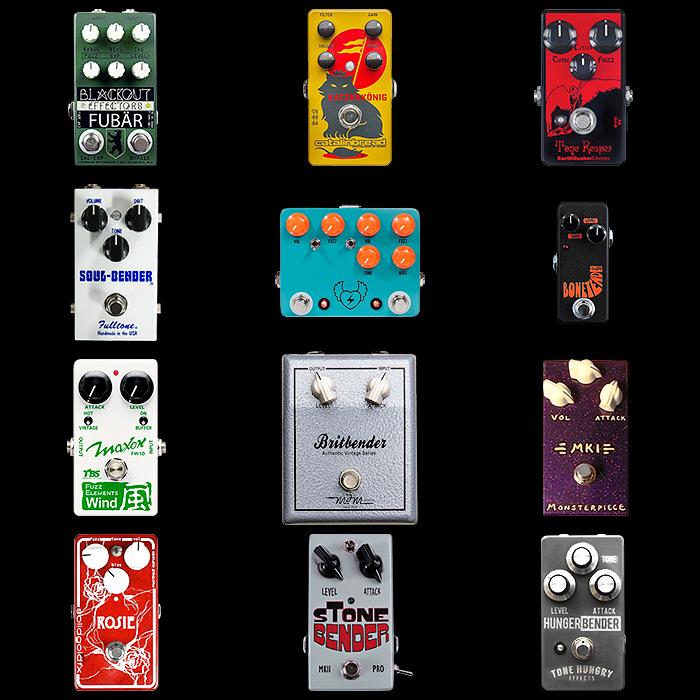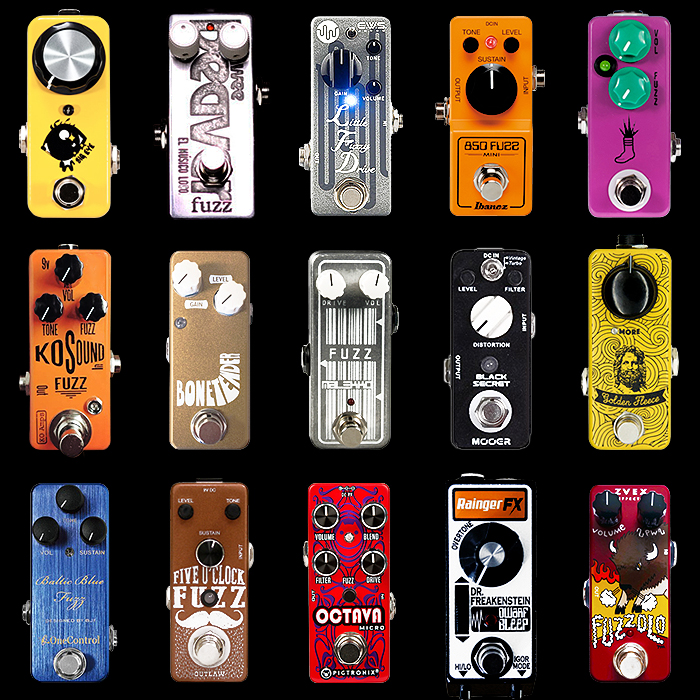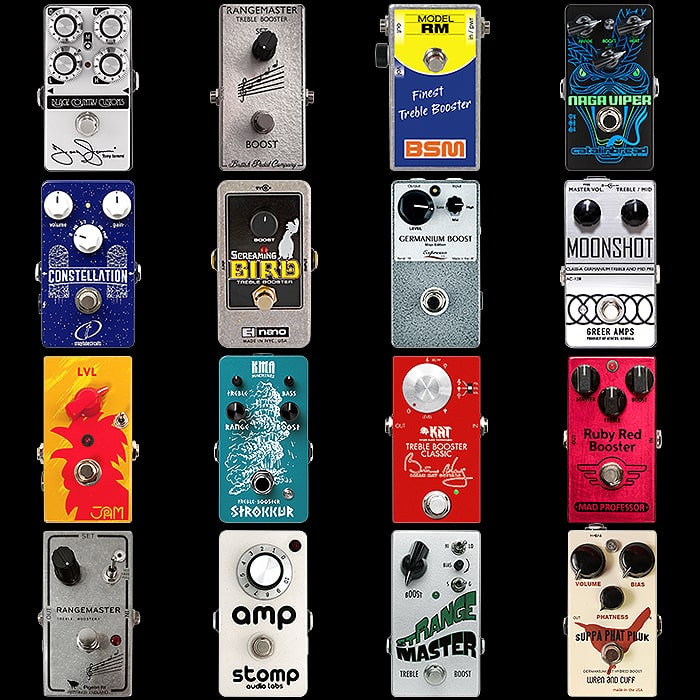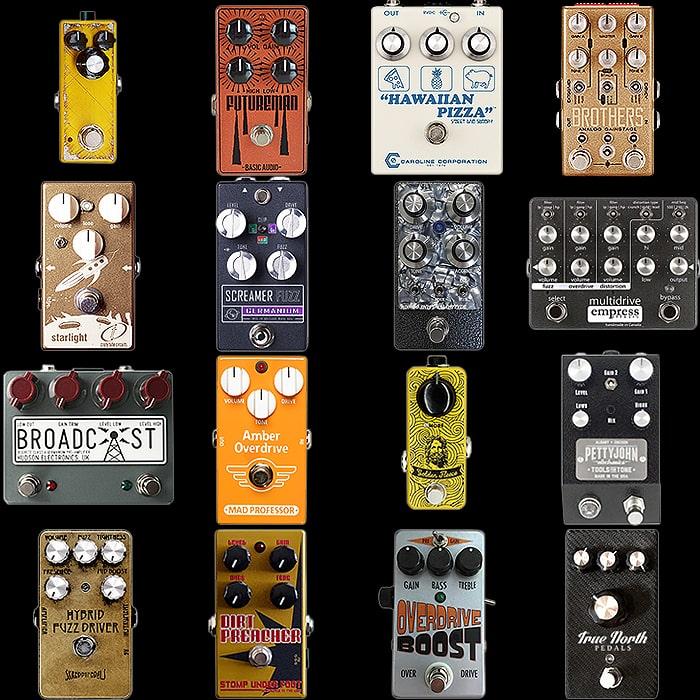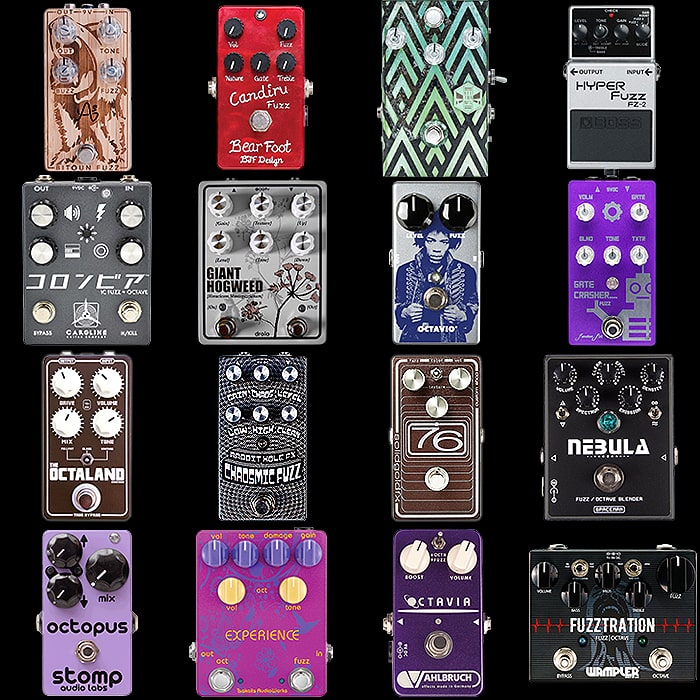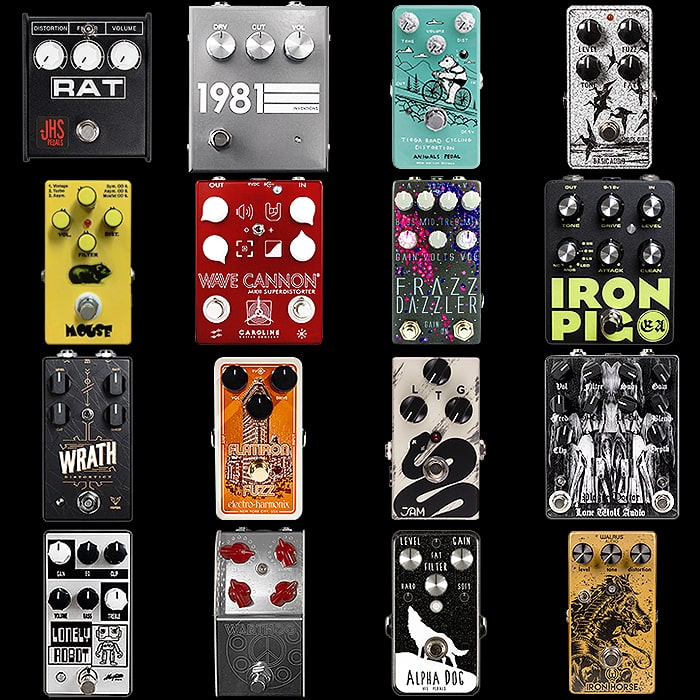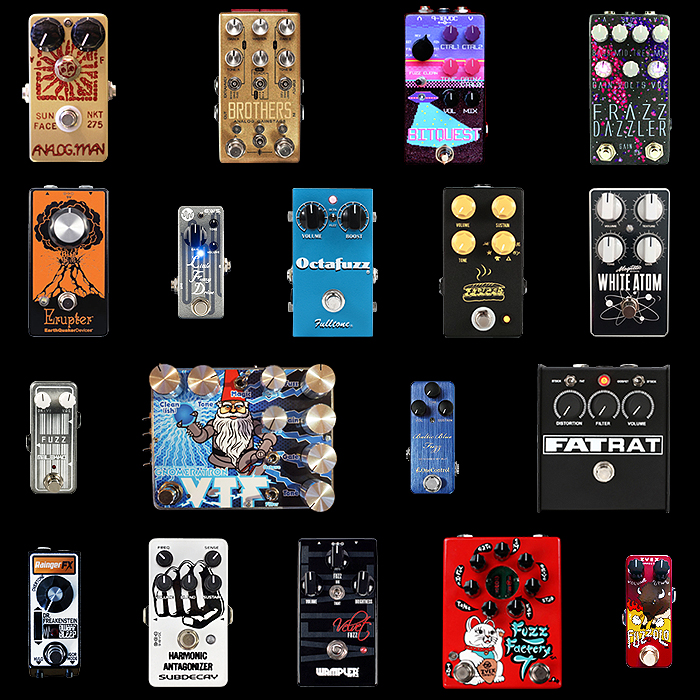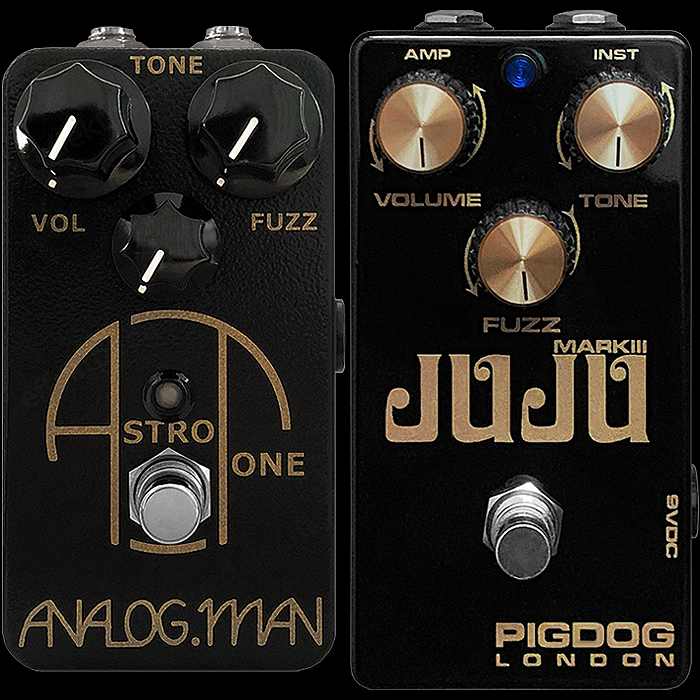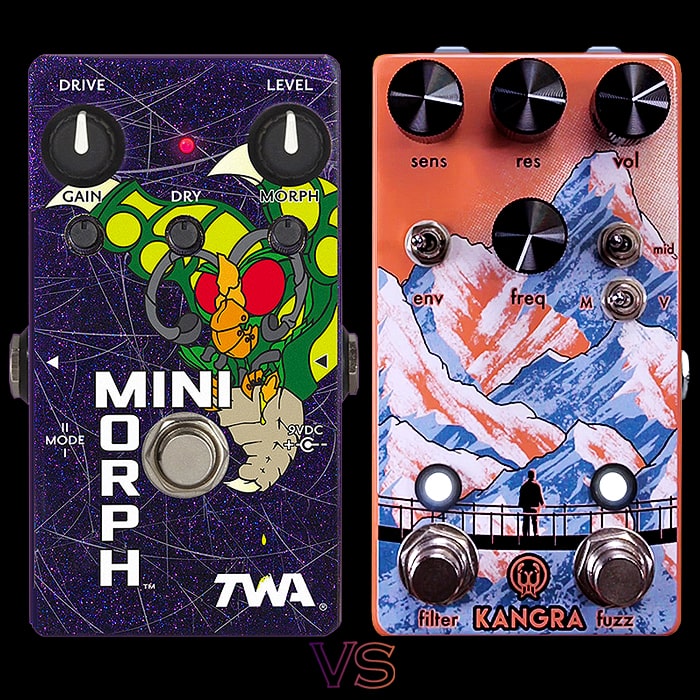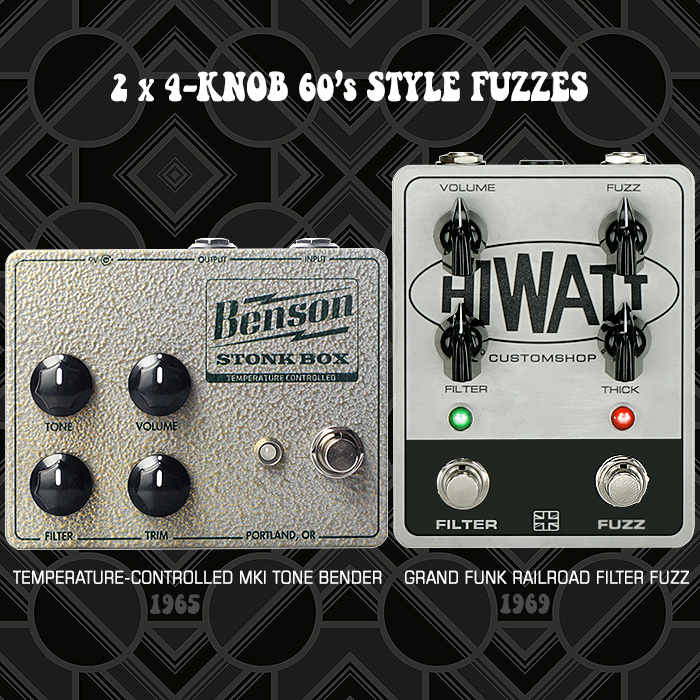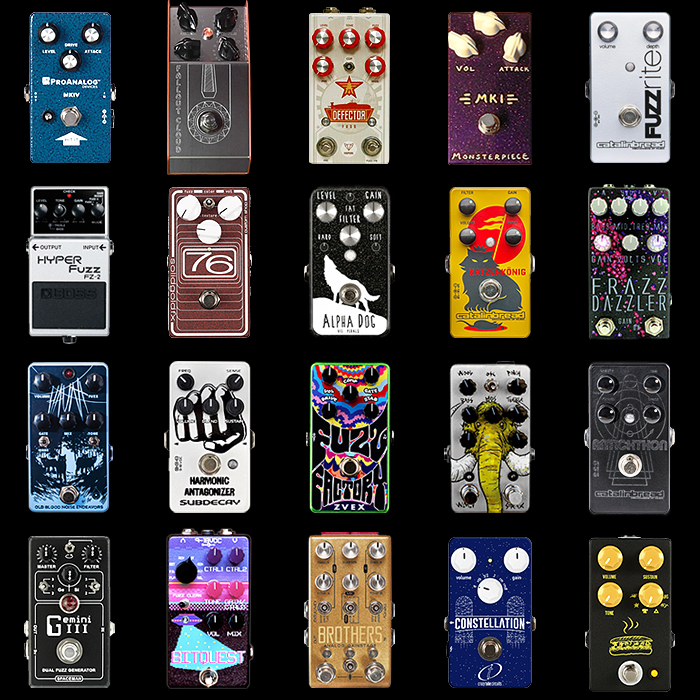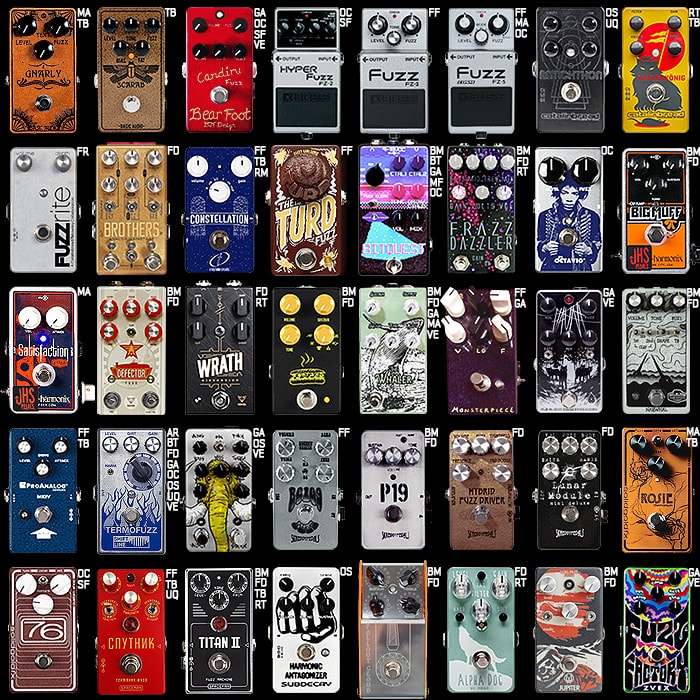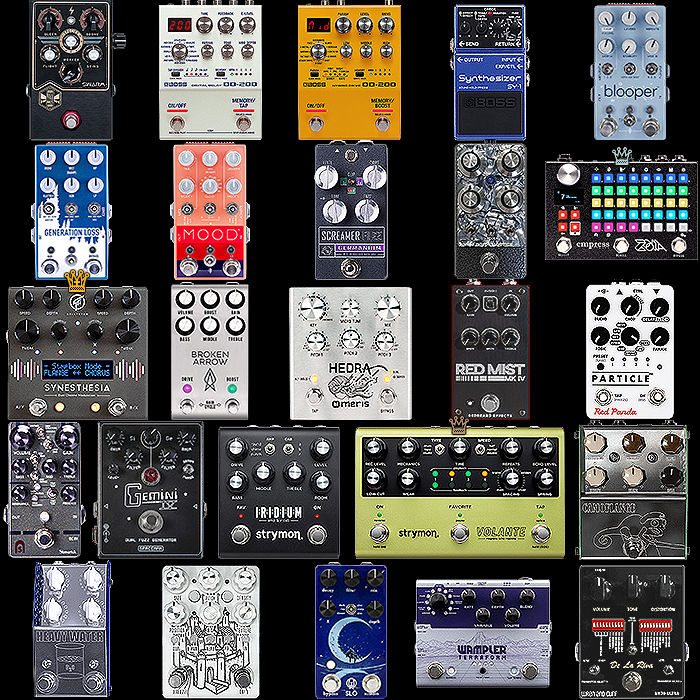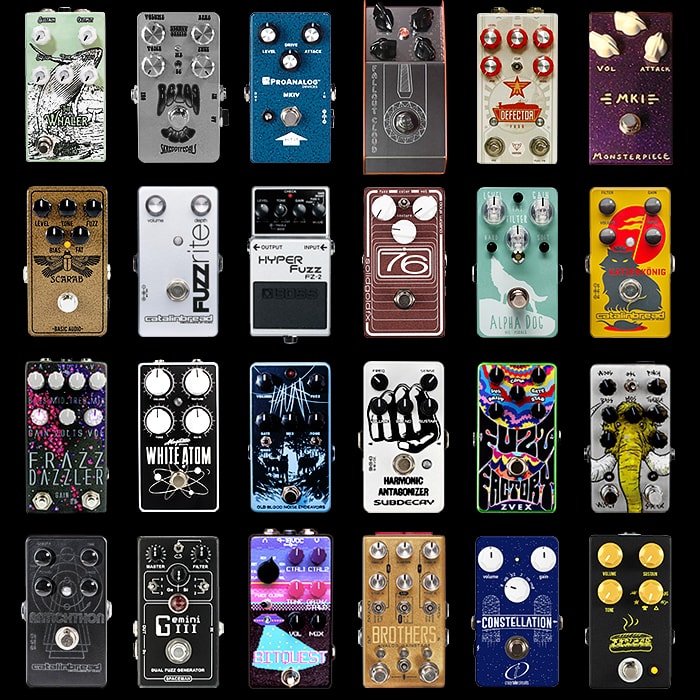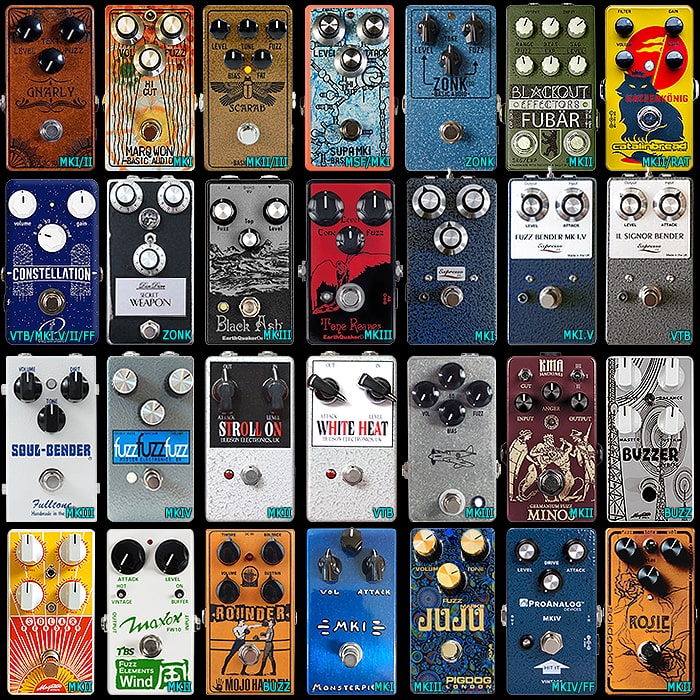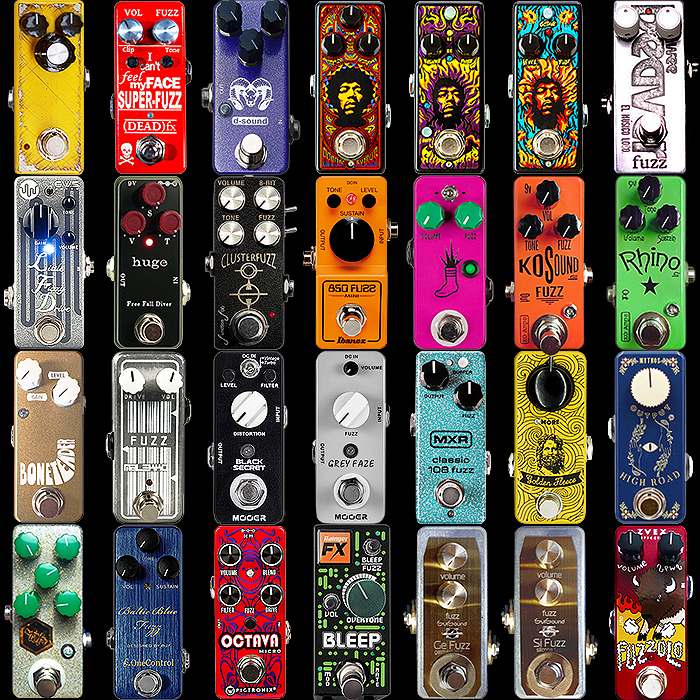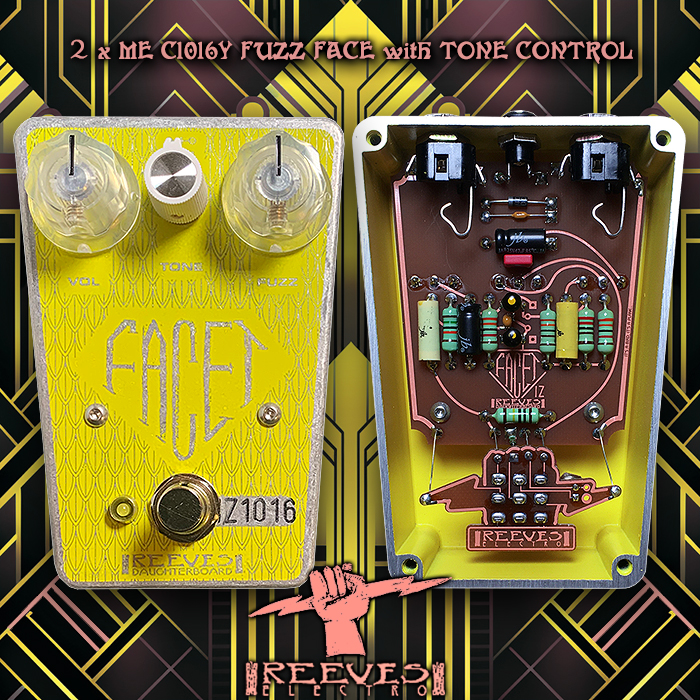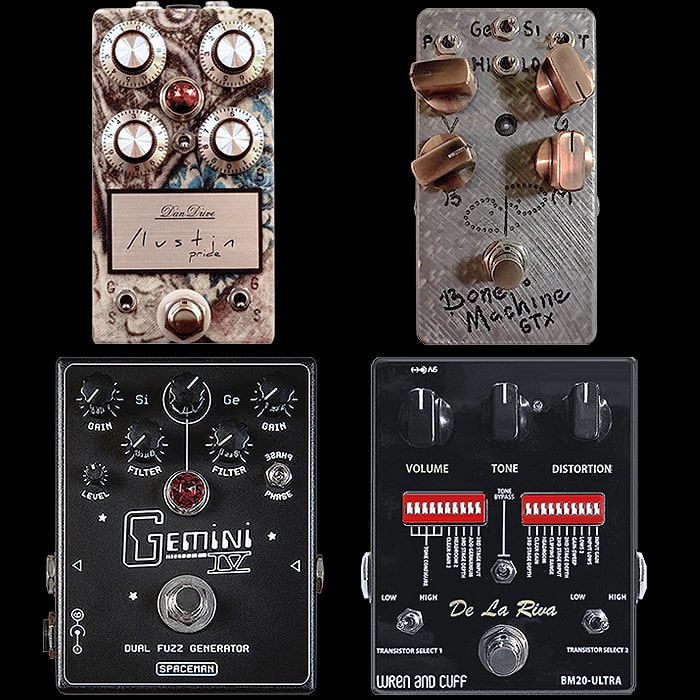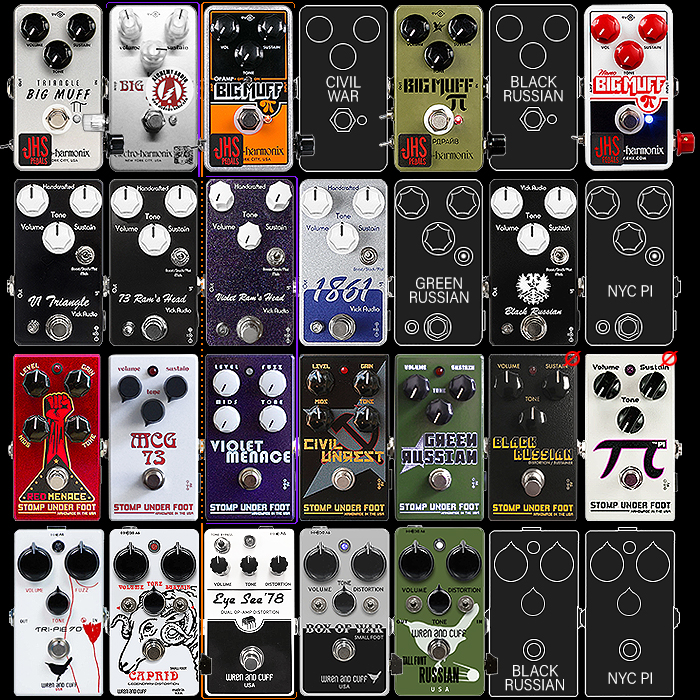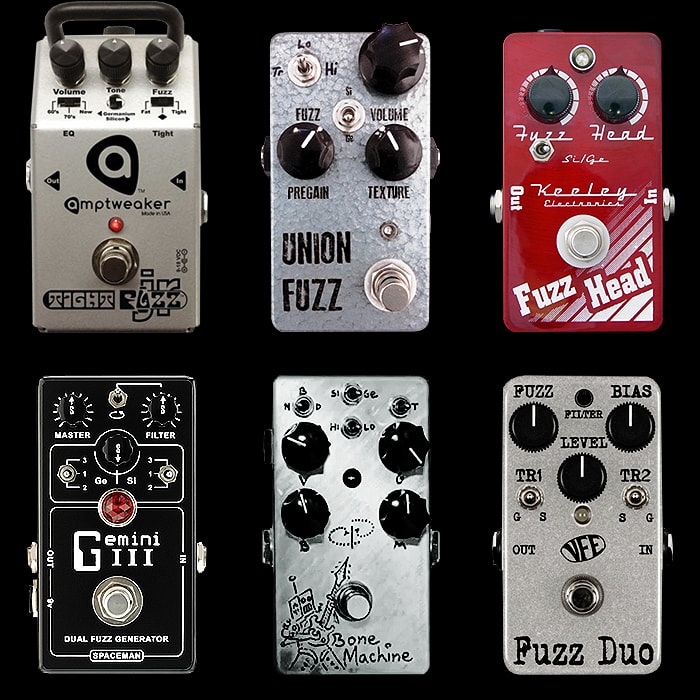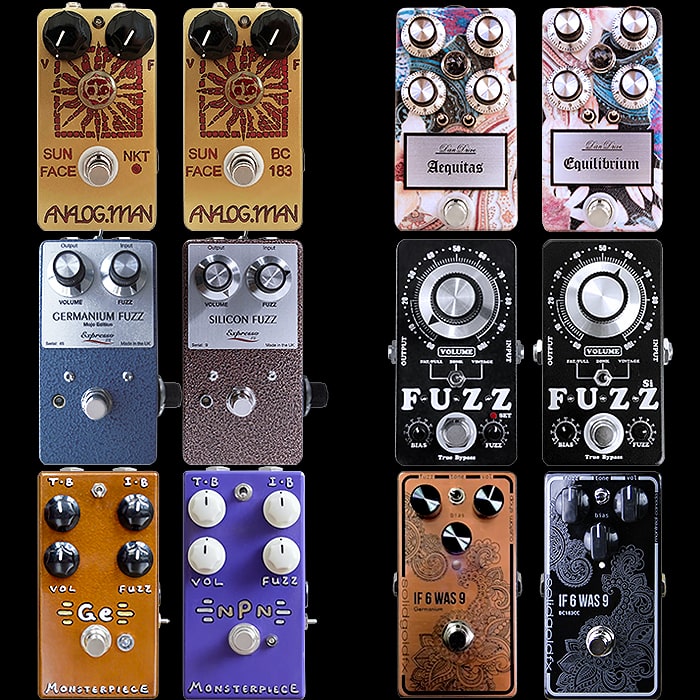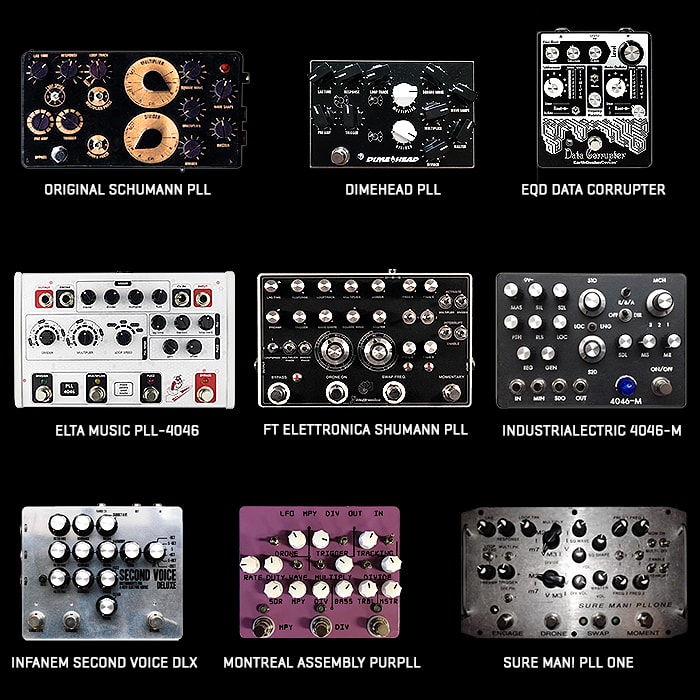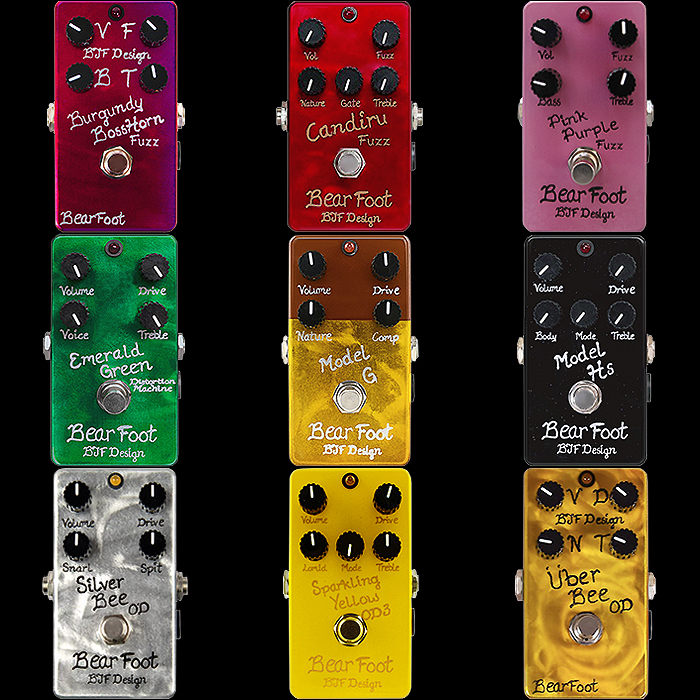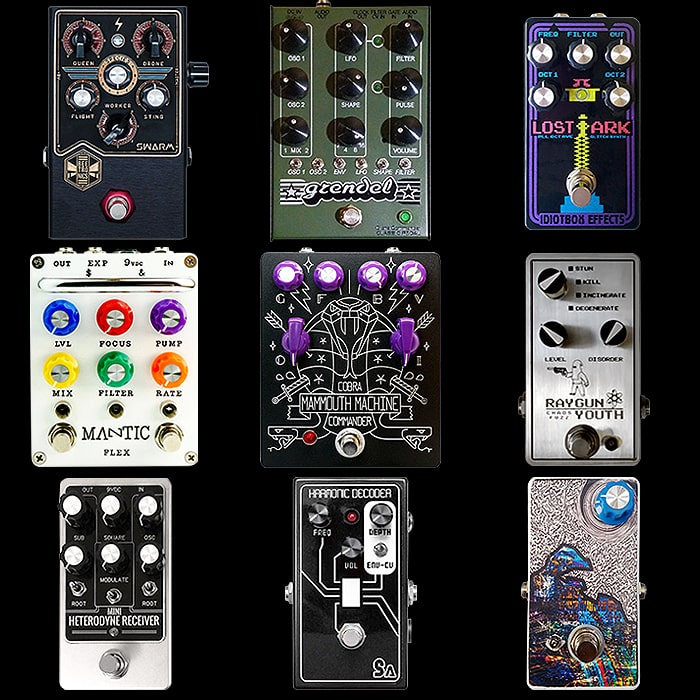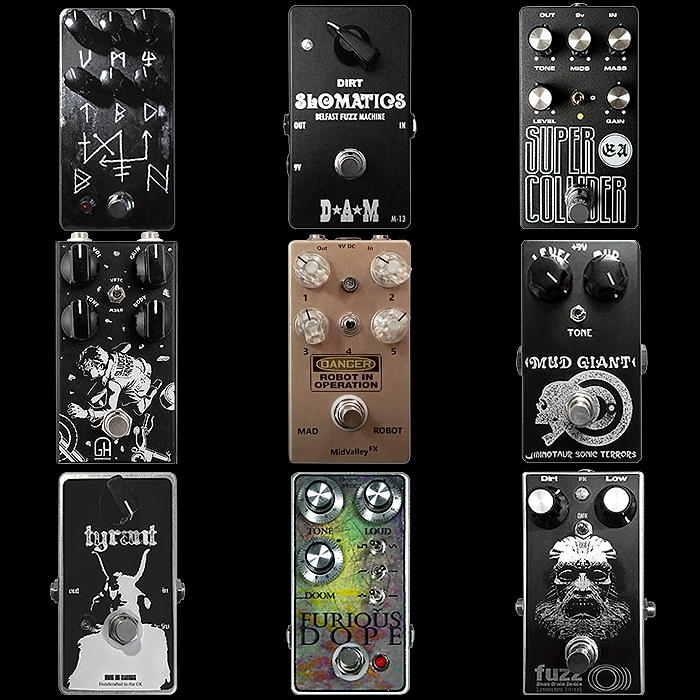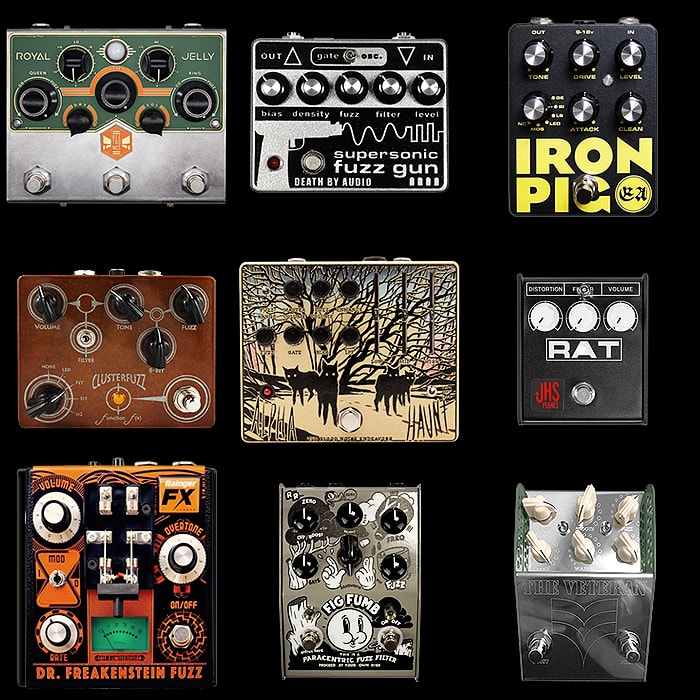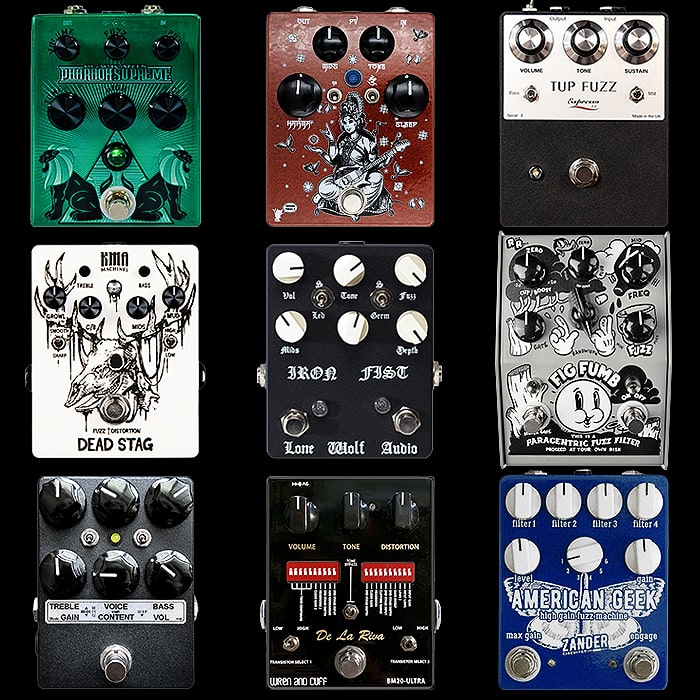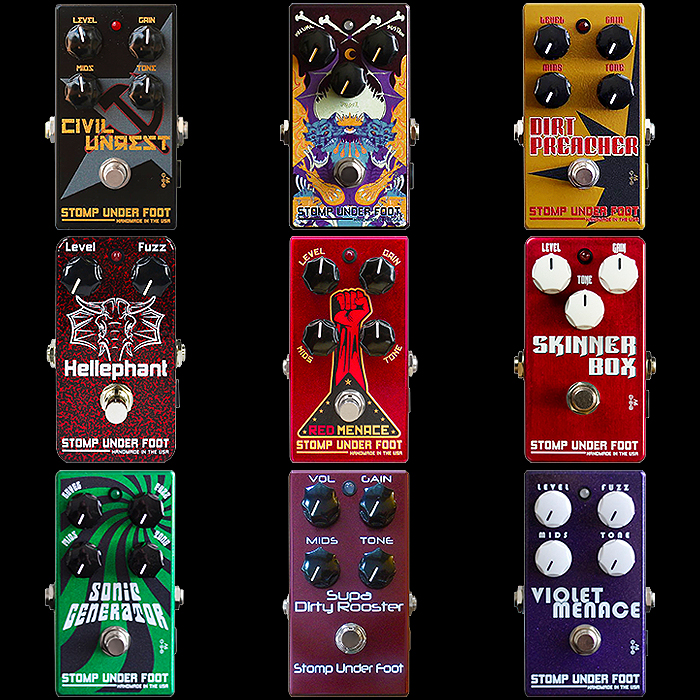The Meticulous Methods of Expresso FX's Fuzz Transistor Charmer Sof Tebboune
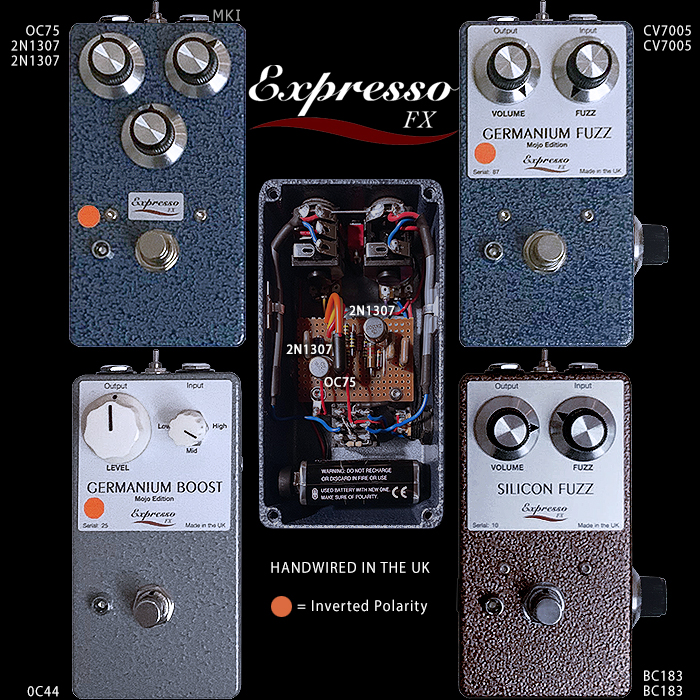
I first came into contact with Expresso FX when researching my piece on Treble Boosters back in May - where Expresso’s Germanium Boost was one of the standouts in that roundup. During my research I of course came across the Harry Holden Demo for the Expresso Germanium Boost - which then naturally led me tangentially to another of Harry’s Demos - this time covering the Expresso Germanium Fuzz - CV7005 edition.
I can’t explain it exactly - but something in the tone and timbre of that CV7005 Germanium Fuzz really appealed to me - and I carried out further triangulation (Noam Avital etc.) to establish the credentials and provenance of said Fuzz Face variant. I already had more than 20 Fuzz Faces at the time (admittedly none CV7005) so each additional pedal has to have something really special to warrant its place in the collection. I soon established that the CV7005 indeed seemed to be a consistently fantastic fuzz and soon after acquired my very first Expresso FX pedal.
In following up the purchase of that Germanium Fuzz I made proper contact with Sof Tebboune and we’ve pretty much had regular weekly conversations since. It would seem we are both somewhat detail-obsessed in our ways of being and have a shared appreciation for a somewhat refined and methodical approach to essential tasks.
As I’ve said many times before - it’s not just the sound of a pedal that wins me over - it’s how good that pedal looks, and what its proper context and provenance within its core function is. If you view Sof’s ExpressoFX.com website - you can’t fail to be impressed by the meticulous arrangement of those pedals - the precisely laid out photography and neatly and clearly delineated details and options for each pedal. The website alone is nearly enough to win you over - but it’s just one of the many facets which make up the Expresso FX experience.
The pedals themselves come in very attractive muted shades of hammerite finished enclosures - with aluminium facia / logo plates for knob legends etc. What look like rivets on the pedal facias are actually military grade marine screws which anchor a part of the circuitry - usually the main perf-board. I really like how the range looks - apart from the fact that I’m not overly enamoured with the gold colour of the stock Fuzz Bender MKI - but the Germanium and Silicon Fuzz enclosures are particularly eye-catching - with contrasting flecks of darker paint producing a beautifully complex, textured finish.
The insides of the pedals are pretty much the same story - with very neat, nay pristine through-hole wiring / assembly onto said perf-boards. Sof rightly prides himself on the quality of his components and all his pedals could do with transparent base-plates so you can see just how neatly the components are aligned and assembled.
Philosophy
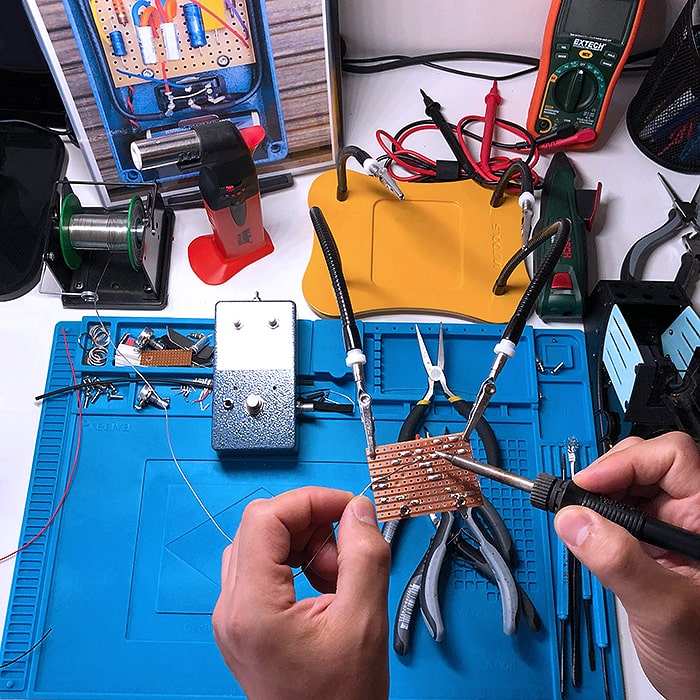
Every pedal builder has a slightly different philosophy and Sof's is one of using the best authentic vintage parts within a vintage-oriented build style - while making some slight improvements in the area of enclosure size and usability. Meaning that he offers Bias controls on most of his pedals, but otherwise keeps the vintage circuits pretty much unadulterated - which translates to the need for inverted polarity power supply on a number of the Germanium pedals.
In any case I first acquired the exceptional CV7005 Germanium Fuzz, and then Sof announced he would be offering the original RangeMaster Transistor on his Germanium Boost - i.e. the OC44 - so I had to have that. Then in quick succession I decided I should get the BC183 Silicon Fuzz to sort of complement the CV7005, and that I really needed one of Sof's 3-Transistor Tone Benders. Those that know me - will know that I'm a fierce advocate of the compact enclosure format - so I was not likely to be happy with the 1590BB or 1590P1 varieties of enclosures. Sof and I decided that we should aim for a MKI variant in custom compact enclosure - and with 3-knob layout - including Bias control. Sof then set to his usual 'Transistor-Wrangling' in developing the best possible tone for my MKI Fuzz. In the end he settled on a combination of Mullard OC75 + 2 x TI 2N1307 Transistors - which to my ears sound fantastic, and make this my favourite Expresso pedal to date - even though the CV7005 Fuzz Face is stellar too.
Sof is fastidious about achieving the best combination of low noise floor and rich saturating tone - which takes a fair amount of finessing to get just right. There are several pedal builders that don't pay too much heed to the noise floor, but for Sof it's all about achieving that perfect balance of signal to noise ratio - it's another thing that makes these pedals so appealing to me.
I've also indicated that I will likely acquire Sof's Tup Fuzz or BM Ram's Head variant in the next month or two - running on BC239C Transistors - and that will probably do me for a while. I'm still open to acquiring one or two more Tone Bender variants, and Sof says he's thinking of creating a JHS Zonk Machine type next - so I may be in on that run too. The only down-side to some of these pedals is that in having a modular approach of component choices - some of the surface-positioning of controls and sockets is not ideal for those components - like the power socket on the left hand side, and the additional Bias knob on the right - that said, you can of course currently order in custom variants like my own MKI - which features the 3 knobs in an inverted pyramid cluster - all on the pedal facia.
I'm obviously quite taken in by these pedals - and it's the whole experience of them that counts here - I really like how open, clear and transparent Sof is with his elegant and detailed descriptions - and how well everything is laid out and explained on his website. He is totally honest about everything he does and is one of the very few to give you details of the exact version of Transistor used. There are many who purport for instance to be supplying original NKT275 transistors - where those are actually not the original TO-1 Short format, but the slightly later TO-1 Long/Thin variety. I really admire Sof's forthrightness and honesty here - there's also none of that silly mysticism which accompanies some fuzz pedals - gooping of components and obscuring component origins. With Sof - what you see is what you get - which is refined, classic elegance. Sof considers his own approach not dissimilar to Fuzz Lord Stu Castledine, while I actually see him closer to John Lyons of Basic Audio in many ways - albeit John makes more concessions toward modernising his circuits.
Roots
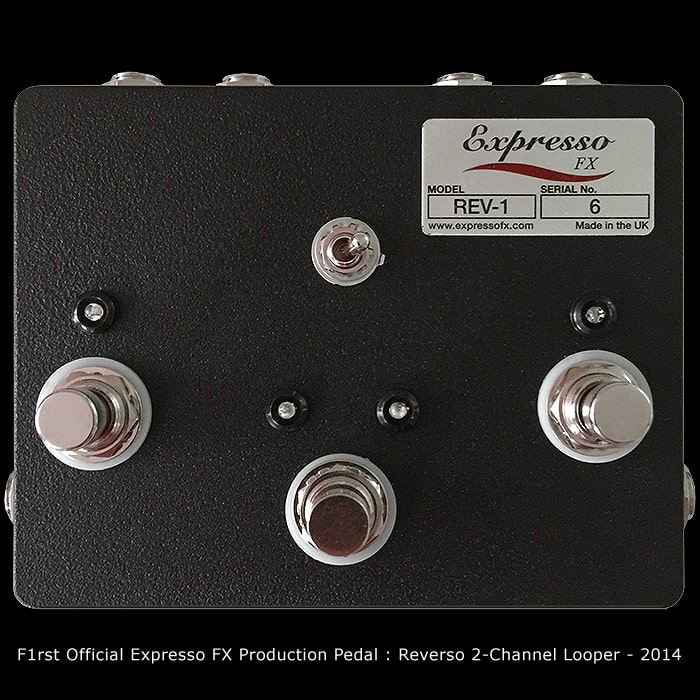
In terms of how all of this started, Sof has always enjoyed tinkering with electrical and electronic devices - radios and various music players in his teenage years for instance. When he got into guitar - one of the first things he did was to open up the back of pedals and figure out what was going on inside. This led to a natural curiosity and fascination for Transistors - which has stayed with him to this day. In fact the main thing Sof collects over and above everything else is multiple different vintage Transistor types of every variety. Nor is Sof afraid to experiment within those families - having gained insight into the key characteristics of each variant over the years. He may not offer as many different options as Analog.Man Mike Piera, but he likely has just as many Transistor types stowed away in his collection.
The very first Expresso FX pedal however wasn't a Fuzz - it was rather the 'Reverso' - a 2-Channel Looper-Switcher with individual send and return per Channel. Possibly a little ahead of its time, as those sorts of pedals seem to be sort of flavour of the month now, but certainly weren't back in 2014.
In any case Sof soon found his feet in familiar territory and his Germanium Fuzz is currently his runaway best-seller overall. While I still have a marginal preference for the MKI he made for me. Interestingly Sof's own favourite varieties are his Germanium Fuzz Face style circuits as such - the aforementioned CV7005 Germanium Fuzz and the closely associated OC75 Fuzz Bender MKI.V.
Sof's biggest daily challenges are currently largely in the area of enclosure finishing - where it's proving to be difficult to source consistently high quality finished enclosures to his own exacting standards. Everything else Sof tends to do himself - including the drilling of the enclosures and every other aspect of the finished devices. Like many builders of his ilk - he derives pleasure from the build process itself - and the nuances in selecting the perfect Transistor pairings and hitting the sweetspot on the output. I'm personally fascinated by how many builders derive therapeutic value from what to me is a very fastidious and often fiddly and frustrating process - and where others just like doing the circuit designs - but are happier to outsource the rest - especially the assembly!
Current Range
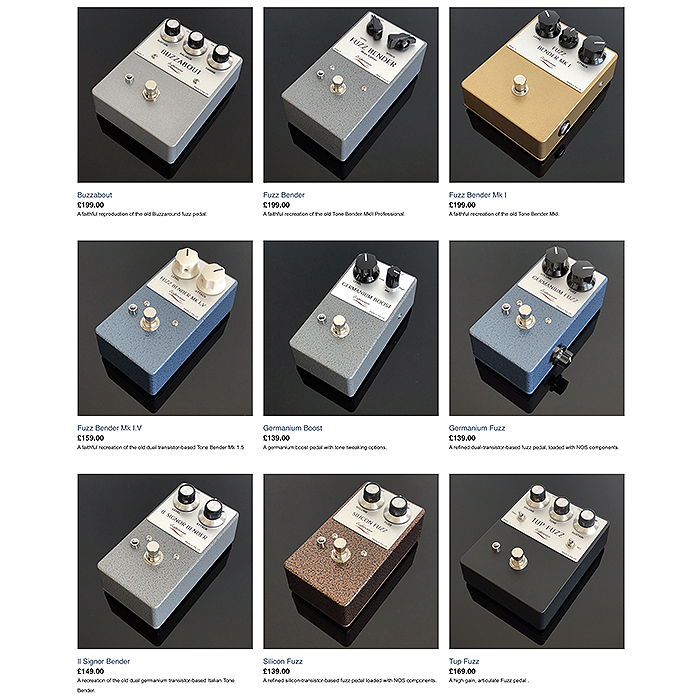
There are currently 9 pedals in the range - 5 Tone Bender Variants (including the Buzzaround variety), 2 Fuzz Faces (Germanium & Silicon), The Germanium Boost, and the BM Ram's Head style BC239C loaded Tup Fuzz. I personally have 4 of these in my collection as pictured up top - the Custom Fuzz Bender MKI (OC75 + 2 x TI 2N1307), Germanium Boost (OC44), Germanium Fuzz (2 x CV7005), and Silicon Fuzz (2 x BC183) - and plan on adding the Tup Fuzz some day soon. Sof has also indicated that he's considering doing a Zonk Machine variety - which I like the sound of, and I still quite like his Buzzabout - but would have it also in a more compact enclosure.
Weirdly, while I'm quite accepting of the Big Muff variant in a 1590BB enclosure - I really want all the other pedals in compact formats - which excludes the BB Tone Benders and the 1590P1 enclosure format also. I would actually be delighted to see the whole collection in compact enclosures - a la John Lyons / Basic Audio - but do conceded that there are some players partial to the bigger boxes for some weird inexplicable reason. The only enclosure colour I'm not enamoured with is the Gold finish currently employed on the standard version of the MKI - otherwise I feel that his is as elegant a range as you might wish to encounter.
Each of these pedals has been carefully and meticulously assembled and 'tuned' by Sof himself - and they provide exceptional value - particularly on the ratio of aesthetics to vintage components to RRP. Sof is currently slightly rather unsung and under the radar at the moment, but I really don't expect that to last - his fine attention to detail deserves a much bigger audience which I don't doubt will soon come to pass. Part of the problem here is that Sof makes everything himself by hand which he's not going to change - so he will likely move away from the options-based approach - more towards the Mirco-Batch approach of many of his peers - where he simply release specific pedal variants - around 20 at a time.
Here follows the full range in any case as it stands:
Buzzabout (Burns Buzzaround) : £199-£209 depending on options
A very classic take on the Baldwin-Burns Buzzaround circuit - with the same number of knobs and legends - Sustain | Balance | Timbre. The original pedals had 3 x NKT123 Transistors, while Sof's own variant utilises 1 x Mullard OC76 and 2 x Newmarket CV7007's. No doubt a classy take on the original - which I may still go for in Custom Compact format. The Buzzabout is the only Expresso FX pedal which does not as yet have a YouTube demo video - although there are sound-clips on Instagram and Facebook. I will add a video here as soon as one materialises.
Fuzz Bender (Professional MKII) : £199-£214 depending on options
I really have a pet peeve about the 1590P1 enclosure - which I occasionally mis-identify as a compact enclosure because of the similar proportions, but then notice the relatively small size of footswitch. This particular enclosure has become very synonymous with / identified with the MKII type of Tone Bender - while I personally feel there just isn't need for this any more - and the circuit would be just as well served in a more pedalboard-friendly 1590N1 style enclosure - like most of the others in the range. As standard you get the classic 2 knobs - Level and Attack - with the option to have an additional Bias Knob mounted on the right hand side. It's a great sounding MKII - being offered here in both OC75 and OC84 varieties - where I have a distinct preference for the former. The very original MKII's came with OC81D Transistors which are now unfortunately near impossible to get hold of - the OC75's though are a very suitable substitute.
Fuzz Bender MKI : £199-£214 depending on options
I of course have this in the same beautiful flecked blue compact enclosure as my Germanium Fuzz - in a Custom version utilising 1 x Mullard OC75 + 2 x TI 2N1307 - rather than Sof's default solution / selection of 1 x Mullard OC75 + 2 x Mullard AC128. Sof's stock MKI comes in a gold-finished 1590BB enclosure which is not entirely to my liking - although I still very much like its output. I of course will always prefer having Bias Knobs for further tone-shaping - however subtle the difference. The very original MKI's had 1 x Mullard OC75 + 2 x TI 2G381 - and I feel that my own specific custom version here - per the below Instagram sound clip is a really cool take on that - with a distinct voice of its own. This is my current favourite Expresso FX pedal, only just pipping the pretty much equally stellar CV7005 Germanium Fuzz.
Fuzz Bender MKI.V : £159-£174 depending on options
Most will know that the MKI.V was actually a relatively short-lived Tone Bender variety which nevertheless went on to inspire greater things - and the creamier Fuzz Face derived from this same 2-Transistor Circuit. The very original I.V's obviously had 2 x OC75 Transistors, while the original Fuzz Face was 2 x NKT275. Here Sof is offering pretty much as authentic a circuit as can be - with those same OC75 Transistors, or Optional smoother OC84's. For my ears this comes very close to the Germanium Fuzz Face, although there is a distinct reed-instrument like timbre to the MKI.V while I find I prefer the slightly richer and creamier timbre of the Fuzz Face varieties. For many though the V1.5 is something of a secret weapon, and they prefer its character to the Fuzz Faces which they are so similar too.
Germanium Boost : £139-£164 depending on options
This was the second Expresso pedal I acquired - it was on my 'Nice to Have' list until Sof announced that he had some original OC44 RangeMaster style Transistors in stock - and I quickly snapped one up. I had always wanted to own an authentic OC44 RangeMaster style pedal - but with a little more to it, and this Expresso one provides 7 different frequency clusters from High to Low via separate Range dial selector - which utilises individual 7 separate high quality NOS capacitors rather than just a basic tone stack. I will admit that this won't necessarily be in that regular a rotation for me - but it's certainly useful for focusing or refining and pushing Overdrive and Fuzz frequencies for certain applications.
Germanium Fuzz Mojo Edition (Fuzz Face) : £139-£169 depending on options
This was my first Expresso acquisition - just a wonderful take on the Germanium Fuzz Face - with the CV7005 loaded circuit tuned beautifully for those rich and creamy tones. I of course went for the fully loaded variety with every option - and this is probably my favourite of all the 25 or so Fuzz Face pedals I currently have. It's just fantastically dynamic and expressive and sounds in every way like the kind of Fuzz Face I would design myself if had Sof's ear's and deft touch. This is Expresso's current bestseller and understandably so - while I'm currently preferring my Expresso MKI by just a smidge.
Il Signor Bender (Vox Tone Bender) : £149-£164 depending on options
The very original ones of these came with 2 x OC75's, while Sof's default take comes with a CV7005 + OC76 which many should see as a refinement - I'm sure Sof could do you a 2 x OC75 if you asked really nicely here - obviously gradual changes were introduced into the Italian-made pedals so there is quite a variety of implementations. The early Vox Tone Benders were MKI.V variants which then later switched to the MKII type of circuit. There are obviously nuances between this and the MKI.V variant and different players will likely prefer one of these takes over another. For my own needs I tend to prefer more the Fuzz Faces for these sorts of 2 x Transistor circuits - so I would probably more likely go with another variant of a Fuzz Face than a I.V variant, but that's just me today! It may be a different story tomorrow.
Silicon Fuzz (Fuzz Face) : £139-£159 depending on options
I obviously love my Germanium Fuzz Faces and bizarrely like most of my Silicon variants on that theme to sound similarly warm and sustaining - which is why the BC183 edition of this became my 3rd Expresso FX pedal. The very original Silicon Fuzz Faces came with 2 x BC108C Transistors and then 2 x BC109/C - before being offered up in BC183L varieties some time later. So that if you want to be more originating period correct - then go for the slightly more strident/aggressive CV10806 (Military Grade BC109) edition here. I actually like and have all key varieties of Silicon Fuzz Face Transistors - just right now I have something of a preference for BC183 types - but that might of course all change next week!
Tup Fuzz (Big Muff Ram's Head variant) : £169-£174 depending on options
I included this in my fairly recent 'Multi-Voice Muff-Style Fuzz' article where I already indicated that this would be my likeliest next Expresso FX pedal - not sure exactly how soon - but likely within the next couple of months for sure. This is loaded with BC239C Transistors which seem to have become somewhat synonymous with the Ram's Head type - where the very originals had the now unobtanium N5087 Transistors. I really love the way Sof has tuned this one - the core timbre and tonality sounds fantastic - and you get Bass and Mid Boost toggle switches to suitably shape the output above and beyond the central Tone dial. I would probably prefer this in a more compact enclosure - but I've already kind of made exceptions for Big Muff pedals in 1590BB enclosures and have several of those already - so this one should do just fine too!
Final Thoughts
I've often said that when you buy into a particular builder - you buy into their way of thinking, their tonal preferences / ears and scope and scale of attention to detail - choices of components, knobs and other visual markers - mechanical and aesthetic. With Sof there are visual cues and clues a plenty wherever you care to look - to underline that these are truly well-considered and finely crafted musical devices. Sof's design and implementation choices can be seen in the uniformity and consistency of approach - right across every discipline of the pedal building process and customer experience.
I still feel that the consistency of angles/perspectives and lighting on each of the product photographs is next level stuff - and a great indication of just how much thought and attention has gone into every part of the operation. Sof is still kind of under the radar at the moment - but within a few years time I firmly expect to see him mixing it up with the already celebrated Fuzz Lords I occasionally mention on this blog.
For me the design is right, the tones are fantastically nuanced and richly textured, the attention to detail is exemplary, and the pricing is totally on point. I think it's safe to say that I'm a fan.
So do yourself a favour and treat yourself to one of Sof's finely individually crafted fuzzes - you have 9 exceptional candidates to choose from on the Expresso FX Store - I feel you probably already know my own favourites by now ...







